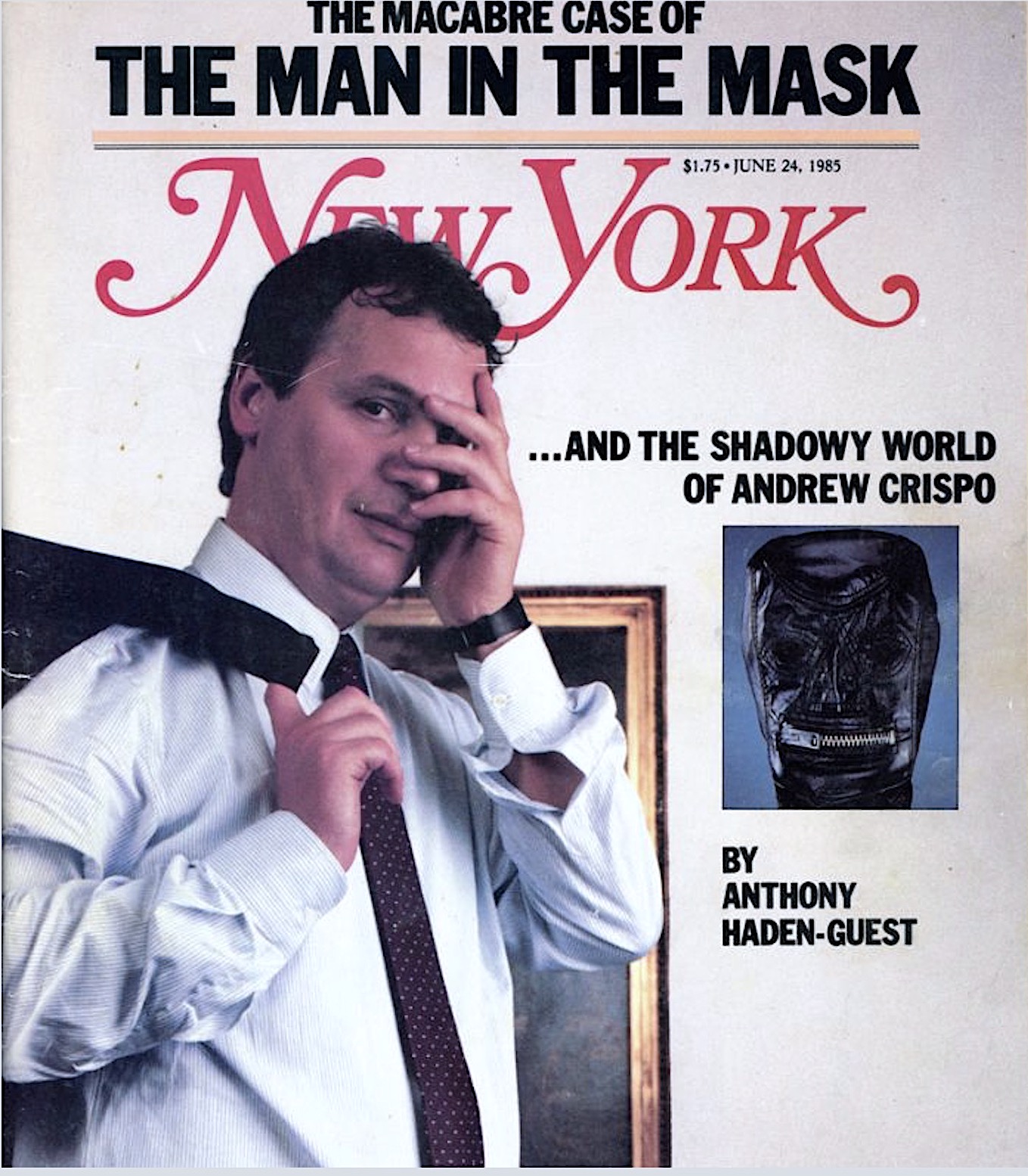Andrew Crispo, whose art career in Manhattan was marked by acclaim and controversy, has died aged 78. Crispo, known for his discerning eye and influential gallery at Madison Avenue and 57th Street, rose to prominence in the New York art scene in the 1970s.
Amidst the excesses of Studio 54 in the late 1970s and what was to define the 1980s, the New York art world became embroiled in a series of tabloid scandals that shook its foundations. One such event unfolded in 1985, when the Cuban-born artist Ana Mendieta tragically met her end, falling from a 34th-story window under mysterious circumstances. The subsequent trial of her husband, renowned Minimalist sculptor Carl Andre (who died this year), captured headlines as he faced and was later acquitted of charges related to her death.
Alongside this emerged another chilling narrative known as the “Death Mask Murder” case, centred around the enigmatic figure of Andrew Crispo and his assistant Bernard LeGeros. Scandals always overshadowed the zenith of Crispo’s career. His involvement in the 1985 Sado/Masochistic murder of Norwegian art student Eigil Dag Vesti further maligned his reputation. Although Crispo denied any involvement in the crime, his connection to the murder cast a dark shadow over his legacy. He managed to evade indictment in this sensationalistic case; meanwhile, LeGeros found himself serving a lengthy prison sentence of 25 years to life, marking a stark conclusion to a saga that underscored the dark underbelly of the art world during the era of Wall Street ruthlessness and intrigue. His later entanglement with the law on the grounds of income tax evasion would eventually lead him behind bars.

In 1973, he opened his first gallery despite lacking formal art training. Crispo’s keen eye for talent earned him a reputation as one of the city’s premier art dealers. Representing emerging artists and staging blockbuster exhibitions, he quickly became a fixture among New York’s cultural elite. However, behind the scenes, Crispo’s business practices were mired in allegations of financial impropriety and unscrupulous dealings. Following several tumultuous legal battles, Crispo’s career experienced a downward spiral, culminating in unsuccessful attempts at a comeback, which were marred by further legal troubles and financial woes.
Born on April 21, 1945, in Philadelphia, Crispo’s early life was fraught with hardship. His parents abandoned him, and he was raised in an orphanage. He was a teenage sex worker taken under the wing of Henry McIlhenny, a wealthy art patron and the chairman of the Philadelphia Museum of Art. It was here he learned to mimic a refined exterior. Despite these challenging beginnings, he found his way to New York City in the 1960s, where he immersed himself in the art scene, eventually establishing himself as a prominent art dealer.
However, behind the glitz and glamour lay a darker side to Crispo’s persona. His gallery was plagued by allegations of financial misconduct, with employees accusing him of unethical business practices and withholding payments. Additionally, Crispo’s personal life was marred by drug use and scandalous parties, earning him a reputation for hedonism and excess.
Andrew Crispo’s death marks the end of a tumultuous chapter in the history of the New York art scene. While the scandal may tarnish his legacy, his impact on the art scene cannot be denied. He serves as a cautionary tale of the perils of ambition and excess. Even after his death he continues to provoke fascination and intrigue among those who knew him and the wider art community.

